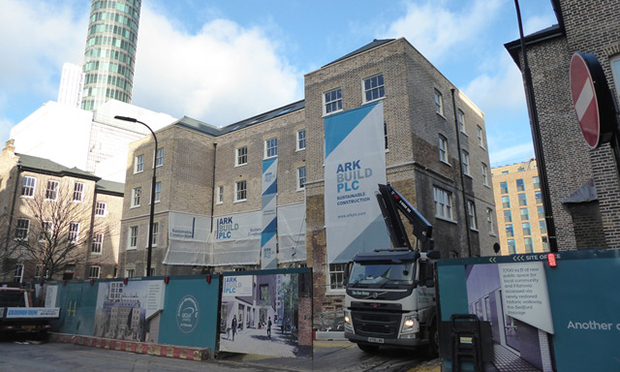Long-running row between Camden Council and hospital charity over housing development reignites at planning hearing

A charity that supports a central London hospital has warned it might have to find a commercial partner to deliver new homes on a former hospital site.
The UCLH Charity bought the Middlesex hospital site from the University of London hospital trust in 2015 and won planning permission in 2019 to build 53 homes – including 36 at affordable rent, four at intermediate rent, and 13 to sell at market rate.
Last year it asked Camden Council to greenlight a new scheme with 57 homes but with just 17 at affordable and intermediate rent and 40 at market value.
Camden Council said it “strongly opposed” the reduction and the charity appealed to the planning inspectorate.
The scheme also includes commercial space for medical use.
At the start of a two-day hearing it told planning inspector Gareth Thomas that the disputed scheme with 30 affordable homes, rather than the 17 it proposes, is simply “not viable”.
The charity’s lawyer Rebecca Clutten said there is no evidence that the council “has the resources to build 100 per cent affordable homes on the site” even it took over the land for £1 – which the Town Hall has threatened to do.
The council and hospital charity dispute a “£1 clause” that would allow the local authority to buy the land for the nominal fee if affordable homes are not built there.
The charity is also challenging the council in the High Court over the historic clause.
“It is likely that if the high court action is successful it will see the 30 legacy units swept away,” said Ms Clutten.
“There is not an alternative scheme waiting in the wings that can be brought forward.”
She told the planning inquiry that changes to the economy, including the increase cost of construction and the impact of covid mean it is simply unviable to build 30 affordable homes.
Developers also faced challenges with the cost of excavation as the land included the burial place for up to 10,000 people, from the former Cleveland Street workhouse and an overflow burial ground for St Paul’s in Covent Garden.
Excavations revealed the remains of 1,017 people.
The charity said it would not make a profit on the site, but is trying to minimise the deficit.
“The charity is facing a significant financial loss,” said its viability expert Andy Smith.
The council’s lawyer Morag Ellis said it was an “unusual” case with a long-running history, including the disputed “£1 clause”.
Camden Council said it was concerned that the scheme did not have enough larger affordable homes, despite the demand on its waiting list. Families face waits of nine years for a four bedoom council home and six years for three bedroomed properties.
Professor Nick Bailey, who is an interested party and helped draw up the Fitzrovia area action plan said: “We need more large units.”
He explained there was a shortage of homes for families.
Professor Bailey said he supports the council and that residents were under the impression that the number of affordable homes had been agreed.
The council said it was concerned about the use of active cooling, rather than less environmentally harmful which could set a precedent. The developers are planning a £326,000 carbon offfset payment for using the system.
UCLH Charity said the scheme “is the best use of the site” which has sat vacant for 15 years and it would be providing 30 per cent or 17 affordable homes, even though both sides agree it is not viable.
